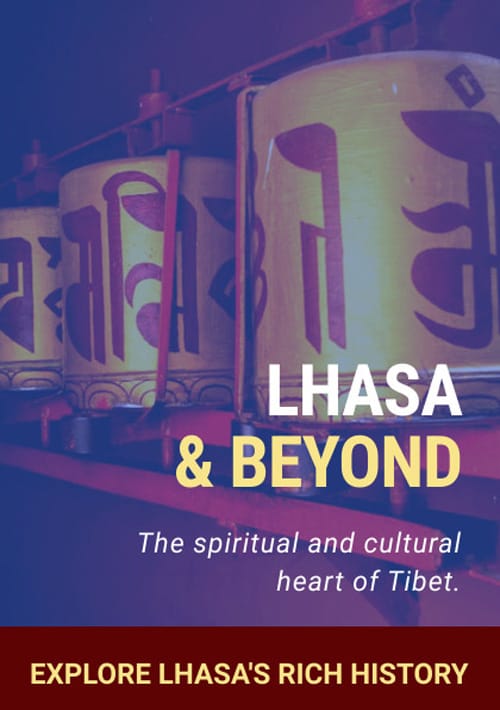
Kham is in the eastern part of Tibet, one of the most remote and culturally rich regions of the Tibetan Plateau. Known for its stunning landscapes, many ethnic groups and spiritual heritage Kham is a gem for adventurous travelers who want to experience real Tibet. From its mountains and lakes to its ancient monasteries and Tibetan villages Kham is a journey through one of Tibet’s most unexplored regions.
Kham is a chance to see traditional Tibetan life, untouched by the modern world. The region is famous for its landscapes, snow capped mountains, grasslands and deep gorges. Kham has a rich cultural heritage with many monasteries, sacred sites and unique Tibetan customs. For those who want to visit an area not many tourists have been to Kham is the chance to see Tibet in its purest form.
Kham is made up of several prefectures including the famous Tibetan areas of Sichuan, Yunnan and Qinghai provinces, each with its own cultural and natural landscapes. The region is a mix of Tibetan nomadic life, ancient Buddhist culture and rugged, breathtaking geography. Whether you’re trekking, visiting monasteries or attending local festivals Kham will be an enriching experience.
Larung Gar Buddhist Institute (Sichuan Province): One of the biggest and most famous Buddhist academies in Tibet, Larung Gar is a beautiful sight nestled in a remote valley. The monastery is home to thousands of monks and nuns and is the hub of Tibetan Buddhism. Visitors can see the hundreds of red and yellow buildings on the hillside and learn about Tibetan Buddhist practices. Larung Gar is a chance for spiritual reflection, meditation and deep cultural immersion.
Sichuan-Tibet Highway: For the adventurous the Sichuan-Tibet Highway is a thrilling drive through some of Tibet’s most spectacular landscapes. The highway from Chengdu to Lhasa goes through the heart of Kham and offers stunning views of snow capped mountains, deep valleys and Tibetan villages. This is one of the most popular ways to travel through the region and a chance to see Kham’s off the beaten track areas. Check one of our best overland tours from Chengdu to Shangri-la with amazing places included in the program.
Yushu Tibetan Autonomous Prefecture (Qinghai Province): Yushu in the northeastern part of Kham is a land of high altitude grasslands and mountains. Yushu is famous for its nomadic lifestyle and natural beauty. Visitors can visit the Yushu Monastery, one of the biggest in the region and experience the local culture which is centered around Tibetan Buddhism and pastoral life. The area is also home to some of the highest peaks in Tibet, including Mount Jomolhari.
The best time to visit Kham is from April to October. Summer (June to August) is the best time with mild weather and clear skies perfect for trekking and outdoor activities. Autumn (September and October) is also a great time to visit with the landscape at its most beautiful as the leaves start to change.
Winter (November to February) can be very cold especially at high altitude and some areas of Kham are hard to access due to snow and road conditions. So it’s best to visit in spring and autumn for the best weather.
Altitude Acclimatization: Kham is at high altitude with many areas above 3,000 meters (9,800 feet). Travelers need to be aware of the risks of altitude sickness. It’s best to acclimatize by spending a few days at lower altitude, such as in Chengdu or Lhasa before heading to Kham. Drink plenty of water, avoid strenuous activities on arrival and listen to your body.
Permits and Travel Restrictions: Additional permits may be required for some areas of Kham. It’s best to book your trip with a licensed travel agency who can help you get the necessary permits and arrange transportation.
Pack for the Outdoors: The weather in Kham can be unpredictable with big temperature difference depending on the season and altitude. Pack layered clothing including warm gear for cold nights and mornings even in summer. A good pair of hiking boots, sunscreen and a hat are also recommended for the rugged terrain.
Respect Local Culture: Kham has many Tibetan ethnic groups and visitors should respect local customs and traditions. Always ask for permission before taking photos of people or religious sites. When visiting monasteries, remove your shoes and speak in a respectful manner. Don’t touch sacred objects or disturb monks during their prayers.
Transportation: Traveling within Kham can be tough as the region is remote and hard to access by public transport. Hiring a private vehicle or joining a guided tour is the best option for most travelers. The Sichuan-Tibet Highway is a popular route but be prepared for long journey and rough road conditions in some areas.
Kham is one of the most beautiful regions of Tibet with a combination of stunning natural scenery, spiritual significance and authentic Tibetan culture. Whether you’re visiting remote monasteries, trekking in the mountains or experiencing the traditional Tibetan life, Kham is an unforgettable journey for those who dare to go off the beaten path. By following the travel tips and being prepared for high altitude, you can make the most of your trip to this part of Tibet. You may also interested in Amdo tours for similar tours outside of the Tibet autonomous region.
Tibet Holiday is a premier Tibet travel agency offering personalized tours to explore the rich culture and stunning landscapes of Tibet. With nearly 20 years of experience, our dedicated team of local experts provides unique insights into Tibetan traditions and spiritual sites. Committed to sustainable travel, we collaborate with local businesses, ensuring an authentic and enriching experience. Whether seeking adventure or cultural exploration, Tibet Holiday designs custom journeys tailored to your interests, making it a trusted choice for unforgettable Tibet experiences.